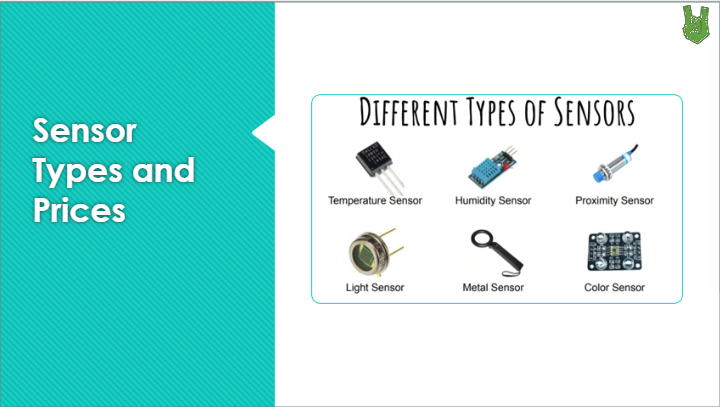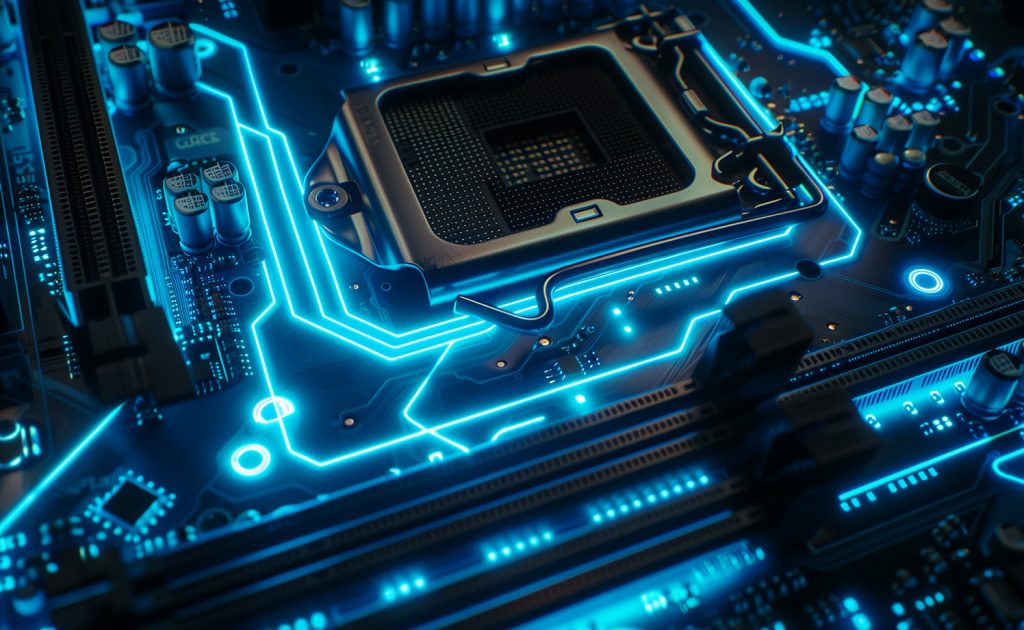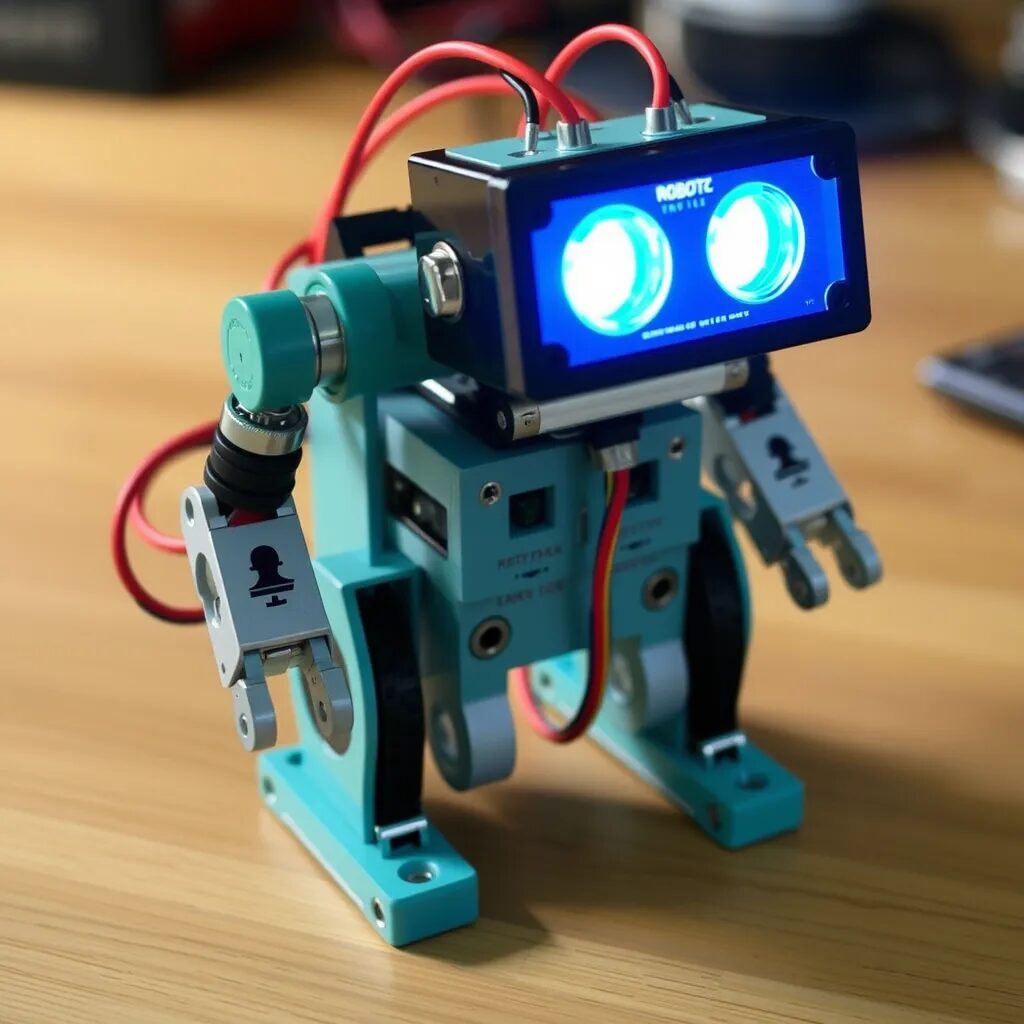Sensors Types & Price – A sensor is a device that senses and responds to input from the physical environment. It produces an output signal to detect a physical phenomenon. The input can be various environmental phenomena, such as light, heat, motion, moisture, and pressure. The output is typically a signal that can be displayed in a way that humans can understand. Sensors are always used with other electronic devices and can be found in everyday objects such as touch-sensitive elevator buttons and lamps that can be controlled by touching the base.
Circuitrocks brings you the best in sensors to suit your individual needs. Whether it be infrared or ultrasonic light sensing, motion detection, pressure gauges, and temperature monitors – Circuitrocks has everything covered. Our wide range of easily-integrated solutions not only provide reliable data but also offer precision accuracy compared with no other supplier on the market today. We guarantee that all our products satisfy stringent quality standards as well as being certified according to industry safety guidelines for use throughout any environment.
With technical guidance from experienced professionals available round-the clock, we ensure customer satisfaction is always achieved when selecting a sensor solution tailored specifically for their own project requirements. From intuitive visualizations through interactive displays right down to analytics & diagnostics – choose Circuitrocks’s arsenal of comprehensive tools offering robust performance at an unbeatable price point!

Types of Sensors
There are different types of sensors are currently available, each with distinct capabilities and applications. Some common examples of these sensors include photoelectric, particle, motion, metal, level, leak, humidity, gas and chemical, force, temperature, IR, ultrasonic, pressure, proximity, and touch sensors. Every sensor type is specifically designed to detect and respond to a particular physical phenomenon, such as proximity, pressure, moisture, motion, heat, or light. The selection of a particular sensor type is dependent on the application and the specific physical phenomenon that needs to be measured or detected.
Here we have listed the different types of sensors and their uses, as well as detectors and transducers.
- Vision and Imaging Sensors
- Temperature Sensors
- Radiation Sensors
- Proximity Sensors
- Pressure Sensors
- Position Sensors
- Photoelectric Sensors
- Particle Sensors
- Motion Sensors
- Metal Sensors
- Level Sensors
- Leak Sensors
- Humidity Sensors
- Gas and Chemical Sensors
- Force Sensors
- Flow Sensors
- Flaw Sensors
- Flame Sensors
- Electrical Sensors
- Contact Sensors
- Non-Contact Sensors
How Do Sensors Work?
There is a particular working criterion of sensors that helps to provide the output. One could get accurate output with sensors as they appropriately detect the input.
- In one way or another, Civilians and military aircraft also use them. So they have the application of the AutoPilot system where the aircraft controls its flight by itself when all the conditions are stable. This system has several sensors, that measure the height, pressure, light, and humidity, and save the information in the system. This information is compared with the preset information which provides a stable condition. If both the information is the same, the computer sends information to various parts of the aircraft such as wings, rudders, and stabilizers. The autopilot takes the charge then and all these play a vital role in this system.
- Another application is using the wireless network in different industries. To collect various data related to different fields, various sensors are used in different places. In medical, engineering, and agricultural fields these sorts of data are used.
- When a fire is detected inside the industry, the smoke detector provides a signal to the light sensor. The light sensor produces light which senses the alarm system implemented inside the industry. This produces an alarm in the industry and thus alerts security and employees.
- Fitbit, the activity tracker tracks the activities of the users by sensing movements such as walking, running, sleeping, and other motions. To track the health of the patient or the person it is also used.
- They are helpful to people to detect smoke, to know their health, and to prevent accidents. One could also detect the missing person as well as the presence of water on the moon with the help of these sensors.
Price of Sensors
When it comes to sensor prices, there’s a balance between affordability and functionality, offering a wide range of options to meet different needs and budgets. The market has solutions for every project, from basic temperature and humidity sensors to more advanced motion and environmental sensors. With the cost of sensors starting from just a few hundred rupees, sensors enable hobbyists, students, and professionals to explore electronics, automation, and IoT without spending too much. Whether you’re creating a smart home system, monitoring environmental conditions, or developing prototypes, the competitive sensors cost in India make them accessible to everyone, encouraging experimentation and innovation nationwide.
Discover all you can do with Circuitrock’s low sensor cost! From basic ones to advanced ones, we’ve got what you need. We have a price range starting from ₱ 25 to approximately ₱600. Whether you’re just having fun, learning, or working, our sensors help you make cool stuff without spending lots. Start your projects with Circuitrocks today!
Conclusion
Sensors are the building blocks of any kind of automated system. At Circuitrocks, we provide a range of reliable and accurate sensors from all popular brands in different shapes, sizes, and prices to meet your exact requirements. Our sensor selection offers an excellent combination of performance and price for industrial solutions along with hobbyist projects.
We offer unparalleled customer service and give technical support on various types like thermocouples, proximity sensors, pressure transducers, etc. We can use them in applications ranging from home automation systems to robotic arms at competitive prices without compromising quality or efficiency standards. You’ll find everything you need here – affordable rates, stock availability options, and free shipping across India! So go ahead; explore our vast collection now!
FAQs on Sensor Types & Price
1. What is a sensor module?
A: Sensors are sophisticated devices that are frequently used to detect and respond to electrical or optical signals. A Sensor converts the physical parameter (for example: temperature, blood pressure, humidity, speed, etc.) into a signal that can be measured electrically.
2. What is the difference between a sensor and a module?
A: Sensors and modules (having extra electronic circuitry along with sensors) are electronic devices that detect and respond to some type of input from the physical environment. The sensor modules often contain extra components to make the sensor easy to use. Like voltage regulator and level shifter to use a 3,3V sensor with 5V, decoupling caps, current limit or pull-up resistors, connection headers, etc.
3. What are the three main parts of the sensor module?
A: Sensors, in their most general form, are systems possessing a variable number of components. Three basic components have already been identified: a sensor element, sensor packaging and connections, and sensor signal processing hardware.



